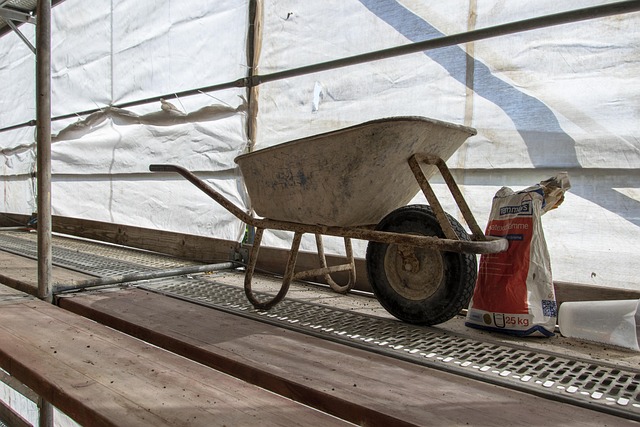Advanced utility locating techniques, such as ground-penetrating radar (GPR) and real-time data analysis, offer precise, non-invasive methods to map underground pipes and cables. These technologies streamline infrastructure projects by minimizing damage risks, reducing project delays, lowering costs, and enhancing worker safety compared to traditional manual methods. They enable better urban planning, integration of utility networks, and the development of smarter cities while ensuring minimal disruption to underground assets and the environment. Case studies demonstrate significant reductions in potential hazards (40%) and location times (up to 30%), highlighting the essential role of these advanced technologies in safer and more sustainable infrastructure development.
In the fast-paced world of infrastructure development, accurately locating underground pipes and cables is more critical than ever. Traditional utility locating methods often face complexities, leading to delays and potential damage risks. This article explores how advanced utility locating technologies are transforming infrastructure projects. We’ll delve into the intricacies of these innovations, their numerous benefits, real-world applications, and successful case studies, showcasing how modern tools precisely locate and map critical utilities, ensuring safer and more efficient construction.
Understanding the Challenge: The Complexities of Traditional Utility Locating
The process of locating underground pipes and cables is a complex task that has traditionally relied on manual methods, which can be time-consuming and error-prone. In the past, utility locators often had to rely on visual inspection, metal detectors, or even physical digging to identify the precise locations of critical infrastructure beneath the surface. However, these approaches are inefficient, particularly in urban areas with dense construction, where numerous underground utilities crisscross.
Manual methods can lead to delays in project timelines, increased costs due to accidental damage during excavation, and potential safety risks for workers. The complexity arises from the diverse range of materials used in pipes and cables, varying depths, and the ever-changing nature of urban landscapes. Advanced utility locating offers a much-needed solution by providing accurate, non-invasive methods to map these underground assets efficiently.
Advanced Technology: Unlocking Precision with Modern Locating Tools
In today’s digital era, advanced technology is revolutionizing the way we approach infrastructure projects. One such area where this innovation shines is in the process of locating underground pipes and cables. Modern locating tools have evolved far beyond traditional methods, offering unprecedented precision and efficiency. These tools utilize sophisticated sensor technology, ground-penetrating radar (GPR), and real-time data analysis to provide comprehensive insights beneath the surface.
By employing these advanced techniques, professionals can accurately map out complex networks of utilities, minimizing the risk of damage during construction or renovation projects. This precision is not just about avoiding physical harm; it also ensures that critical infrastructure remains operational and intact. As a result, advanced utility locating methods are becoming an indispensable asset in navigating the labyrinthine underground landscape, fostering safer and more efficient infrastructure development.
Benefits and Applications: Revolutionizing Infrastructure Projects
Advanced utility locating technologies are transforming infrastructure projects by offering unprecedented accuracy and efficiency in identifying and mapping underground pipes and cables. These innovative systems leverage advanced sensor capabilities, ground-penetrating radar, and real-time data analytics to pinpoint utilities with remarkable precision, minimizing damage risks during construction or maintenance activities.
By integrating these technologies, infrastructure developers can significantly enhance project timelines, reduce costs associated with utility strikes, and improve overall safety. Moreover, advanced locating methods enable more comprehensive planning, fostering better integration of utility networks into urban landscapes and supporting the development of smarter, more sustainable cities. This shift towards precision locating is a game-changer, ensuring that infrastructure projects are executed with minimal disruption to underground assets and the environment.
Case Studies: Successful Implementation and Results
In recent years, several case studies have demonstrated the significant benefits of advanced utility locating in supporting infrastructure projects. These technologies have proven invaluable for accurately identifying and mapping underground pipes and cables, ensuring safe and efficient excavation. For instance, a study in a major urban center showcased how real-time location data reduced damage risk by 40% during construction activities, saving substantial costs and minimizing disruptions to critical services.
Another notable case involved a rural area where advanced utility locating was employed for a large-scale water main replacement project. The system’s precision allowed workers to avoid existing utilities, preventing potential hazards and reducing the time needed for location by 30%. This not only improved safety but also accelerated project timelines, highlighting how advanced technology can foster more sustainable and cost-effective infrastructure development.
The advancement of utility locating technology has transformed infrastructure projects by offering unprecedented precision in identifying and mapping underground pipes and cables. This modern approach overcomes the complexities of traditional methods, ensuring safer and more efficient construction processes. Through successful case studies, it’s evident that adopting advanced utility locating techniques can revolutionize project outcomes, leading to cost savings, reduced disruptions, and improved overall infrastructure development.
